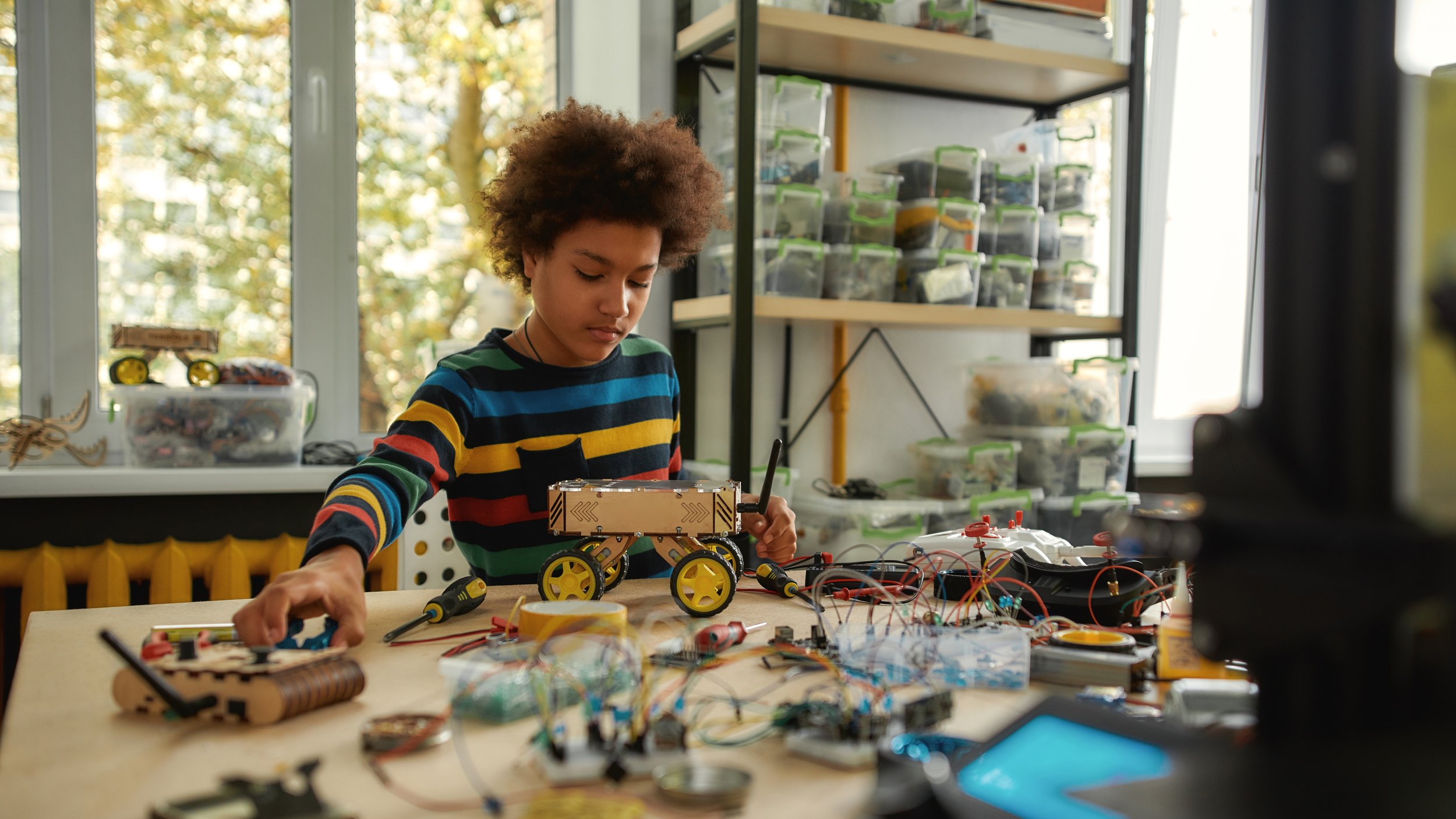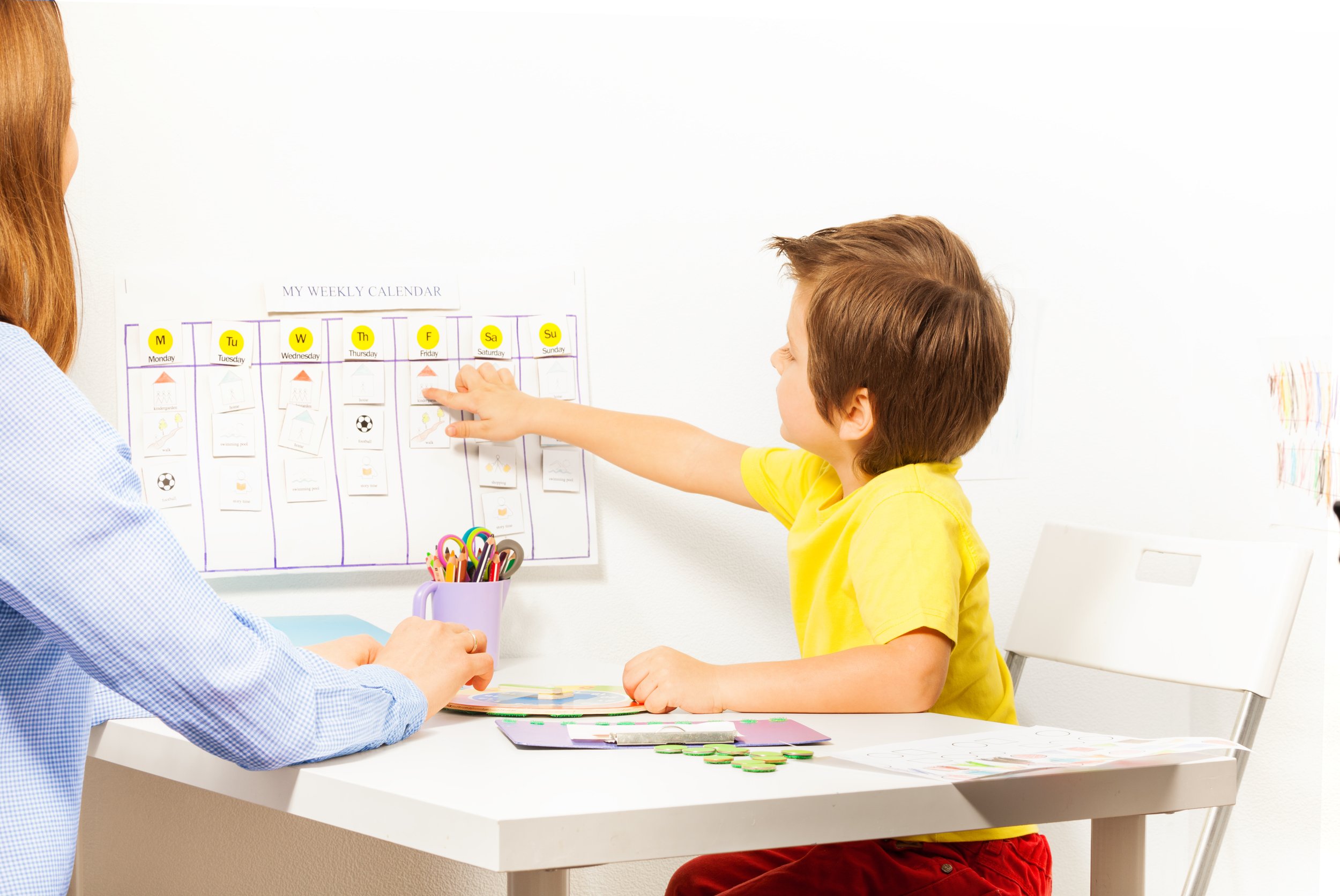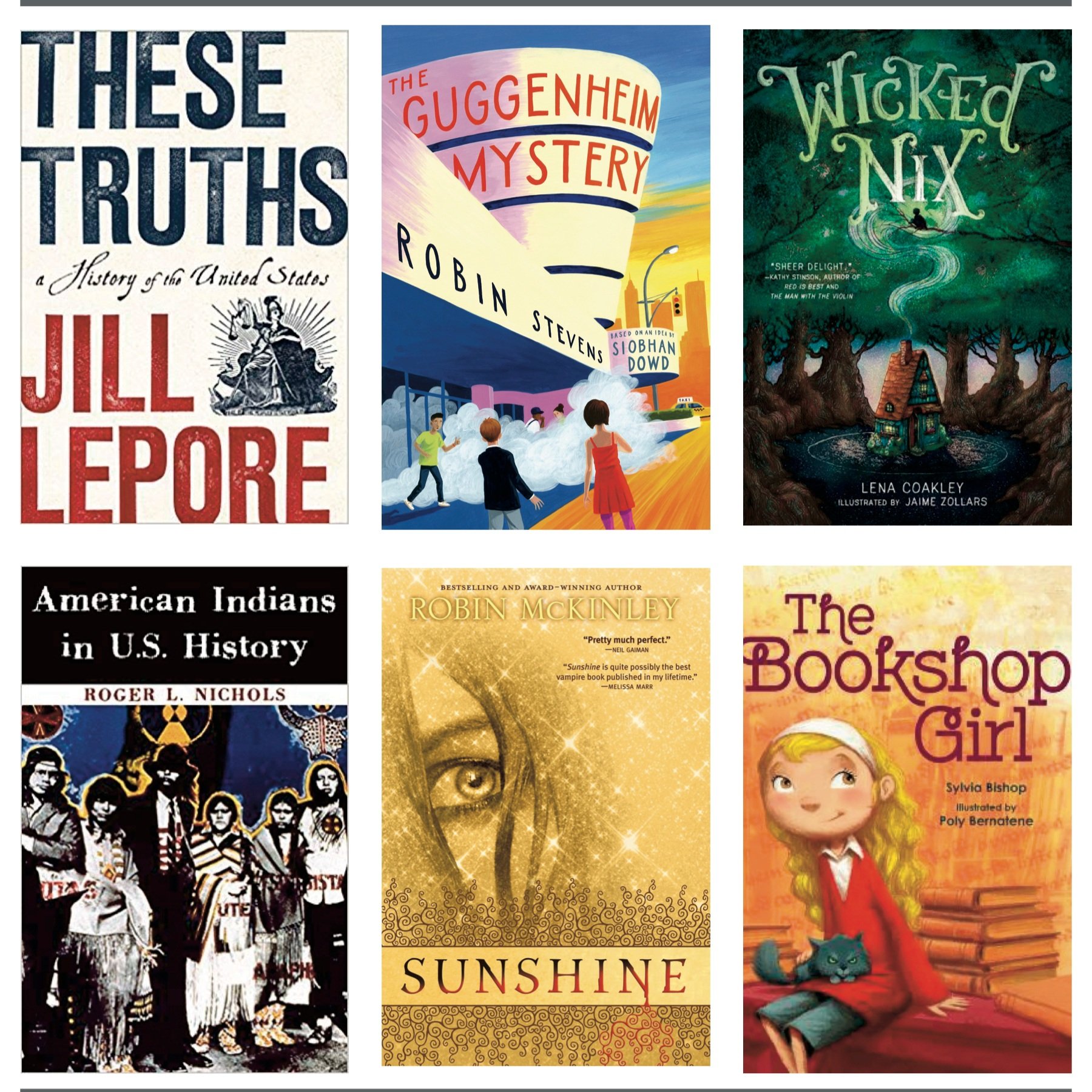Q&A: How Do I Deal with the Clique-y Moms in Our Homeschool Group?
We recently found a homeschool group that my kids love. The problem: The moms are super clique-y and not very nice. Is it worth continuing in a group where I’m miserable, even if my kids are happy with it?
We recently found a homeschool group that my kids love. The problem: The moms are super clique-y and not very nice. Is it worth continuing in a group where I’m miserable, even if my kids are happy with it?
Well, the question you need to ask here is, “Does it matter if this group is a good fit for me?” It’s possible that it doesn’t — you may have your own group of friends and a strong support network, and you can view this group as a social outlet that’s just for your kids. In that case, treat it as you would any activity waiting room: Bring a book or catch up on your phone calls or work on a knitting project, and grab a seat where you don’t have to deal directly with the not-so-nice moms. Smile and say “hi” when you arrive, wave “bye” when you head out, and don’t give any of your emotional energy to the situation beyond that.
Of course, it’s perfectly possible that you’re looking for a social outlet for you as well as for your kids. If that’s your situation, you may want to give these moms a second chance before writing them off. It’s possible that you misread their cues on your first outing, and they are really more welcoming than you thought. Sometimes what seems like shutting other people out is really just a group of people being so excited to catch up with each other that they forget there’s a world outside their group. If you jump into the conversation, they may welcome your participation.
If you’re dealing with a real mom clique — and they’re out there — assume that you aren’t the only mom to get the cold shoulder, and look for other parents on the fringe of the group. Strike up a conversation with the mom who always shows up with a book or the dad who spends the hour working on his tablet. And warmly welcome newcomers who show up, like you, hoping to find a piece of their homeschool community in the group. You may discover that the clique is only a small (if salient) part of the overall group.
If your best efforts still leave you feeling lonely and on the outside, it may be that this just isn’t the group for your family — even if your kids seem to enjoy it. New homeschool groups sprout up every year — you could even start one yourself — and finding one that’s a good fit for your clan can take time and effort. Sometimes moving on is the best way to deal with a snooty group of moms.
This Q&A was originally published in the spring 2015 issue of HSL.
How to Build Homeschool Community When Covid Gets in the Way
Building homeschool community in the age of COVID-19 requires creativity and flexibility — but you can do it. Here’s how.
Building homeschool community in the age of COVID-19 requires creativity and flexibility — but you can do it. Here’s how.
“I keep telling new homeschoolers: This isn’t what homeschooling is like. Everybody is having a hard time feeling connected right now,” says Rachel*, who has been homeschooling her now-in-middle-school son since 4th grade.
Homeschoolers spend a lot of time explaining that no, they’re not worried about socialization because their kids have plenty of opportunities to build social relationships with all kinds of people. In fact, we sometimes feel — fairly, if a little smugly — that our kids get more socialization than in-school kids who spend all day with their same-age, same-class peers. We may have to think creatively and carpool aggressively to make it happen, but homeschoolers like Rachel usually succeed in building a homeschool community. Of course, this is when things are normal — and nothing has been normal for anyone during the social distancing required by the coronavirus pandemic. Now all parents find ourselves in a similar position: How can we keep those important social connections alive for our kids in this challenging time?
The answer is by working to find new ways to keep our community alive and active. We talked to homeschoolers who have had great success reinventing their social networks, social distance style, and discovered several ways homeschoolers are building community — even in these strange times.
Take clubs online. There’s nothing like hanging out in person, but many clubs work just fine online: Book clubs, anime clubs, art clubs, movie clubs, Minecraft clubs, chess clubs — you name it, some version of it can exist online. “We set up a free Slack group for our co-op’s Animal Crossing fans, and the kids have loved it,” says Marti, who runs a busier-than-ever homeschool co-op in California. The club also meets on Zoom every other Monday night, and kids schedule meet-ups on each other’s islands so they can game together in between meetings.
Keep playing together — separately. “My son’s college dorm is hosting a campus Olympics, social-distancing style,” says Lisa, whose homeschooled son attends college on the East Coast. Students enlist time keepers to record their best efforts on the school track, and results are posted on the school intranet. Dorms also compete against each other in ongoing step counts, ping pong iPhone games, and even Boggle tournaments — all ideas that homeschool groups could easily incorporate.
Host outdoor get-togethers. If the weather cooperates, many social events can be reinvented as outdoor activities. If you have enough room for families to stake out space at least six feet apart, you can host outdoor movie nights, dances, talent shows, poetry slams, and other activities. Adrienne’s homeschool group used this year’s dues to buy several outdoor canopies that can be easily set up and taken down. “We can’t hug and high-five, and we’re all wearing masks, but it sure is nice to actually see each other in 3-D,” she says.
Embrace the photo challenge. Kristina spontaneously suggested her homeschool field trip crew send pictures of their pets enjoying having their family home all day with them, and snapping the funniest pet picture each week has become a new tradition. Families share in a What’s App group, and kids compete to come up with the funniest picture and the best caption. “It’s silly, but it’s something we look forward to doing every week — and who doesn’t like to look at other people’s cute pets?”
Do good. Carmen’s family has been spending a lot more time at their community parks during the pandemic, and they aren’t the only ones. Carmen’s 12-year-old and 9-year-old kids noticed that their parks were dirtier than usual, so they put out the call to their homeschool friends and started a park clean-up club. Now the kids take pride in using pick-up sticks and trash bags to pick up trash on their favorite walking trails, sharing before and after photos in their group chat.
*HSL removes last names and other identifying information for online publication.
How Can I Find Friends for My Middle Grades Homeschooler?
My middle schooler’s homeschool community is shrinking right as friends are more important to her than ever, and it’s taking a toll on our homeschool happiness. What can we do?
My middle schooler’s homeschool community is shrinking right as friends are more important to her than ever, and it’s taking a toll on our homeschool happiness. What can we do?
Q: Homeschooling has been a great fit for us for a few years now, but this year, I feel like I’m failing. My daughter is in 6th grade this year, and a lot of our regular homeschool friends have gone back to more traditional schools. Park days are all younger kids, and lots of classes at our co-op that she’s interested in don’t get enough students to meet their minimums. At the same time, her old friends are busy with school and hard to connect with — when I’m actively planning, we can sometimes get a sleepover together, but they rarely think to invite my daughter to anything. She’s lonely and sad and talking about going to school be- cause she misses her friends. Is there anything I can do to fix this?
A: We homeschoolers roll our eyes when people talk about socialization, but we don’t always talk about the other side of that. Sure, our kids are not unsocialized freaks because they’re out in the world, chatting with other human beings and doing normal human things, but it can be hard to make friends as a homeschooler. Some of us luck into great homeschool groups with a lot of locals in easy driving distance, but most of us find the whole friend thing challenging, especially as kids get older. Ironically, that’s also when having friends — not just friendly acquaintances — become especially important for our kids.
Knowing that you’re not alone in this may help a little, but what you really want are solutions. One might be to extend your net: It is common to age out of homeschool groups as time passes. Statistically, more people homeschool elementary school than middle school, and the numbers drop even more as you get to high school. Other people are probably in the same boat you are — they just may not be people in your usual circle. Remember how when you started homeschooling you reached out on social media to find other homeschoolers and went to every homeschool day you could? Do that again. Take a class at that group for older kids, even though you don’t know anyone there and you're not sold on the curriculum. Take all those chances you took at the beginning, when you were committed to building a community.
If you have space — or can make space — it might also be worth trying to organize some events for older homeschoolers yourself. This is usually a high-effort, low-reward project, but you don’t need a big reward for it to be successful — you’re just looking for a handful of kids to hang out with. If one or two people show up, you’re doing well.
This is also a good time to expand your community beyond the homeschool world. If you have a tween who loves animals, volunteer at a pet shelter. If you’re interested in costumes or drama, get involved with a community theater group. Love math? Lots of universities host weekend math circles. If you live in an area where homeschoolers can take public school classes or activities, this might be a good time to try those out. The idea is to connect your child with opportunities to meet like-minded kids, whatever they do for school. Friends your child makes through shared interests are more likely to survive the challenge of different schedules than more casual social connections.
If your daughter’s lack of a social life is really frustrating her and none of these solutions yields results after several months, it’s worth considering whether homeschooling is still the right fit for your family. There are lots of reasons we choose to homeschool, but one of them is to deepen and strengthen family relationships — and if your daughter’s unhappiness at missing her friends is wearing on your relationship, consider other academic options. Hybrid schools, charter schools, online classes, or even public school may be the better fit right now if homeschool social opportunities are limited. The best homeschooling is the kind that constantly reevaluates itself to make sure it’s giving kids what they need. In the middle grades, some kids need a lot of social time, and if homeschooling isn’t providing that, it’s okay to look elsewhere for a year or longer. As long as you’re doing what’s in the best interest of you and your student, you’re homeschooling right.
FAQ: How Do We Let a Long-Time Teacher Know We’re Looking for a New Class?
How do you break up with your kid’s teacher?
We’ve been taking piano with a perfectly nice but not amazing teacher for three years now. My son’s interested in taking lessons with one of his friend’s teachers — he’s a young, enthusiastic guy whom the kids adore. I know it’s okay to switch teachers, but do I need to let our long-time teacher know why we’re leaving? We don’t have any problems with her, but my son is really excited about the opportunity to study with another teacher.
Since you’ve been working with this teacher a while, I think it’s probably good manners to give her a little notice that you won’t be continuing lessons. You don’t have to do this, but it’s nice to let her know that there’s a change coming to her regular income stream in case she wants to advertise for new students or contact people on her waiting list. In some cases, you may actually be required to give her a certain amount of notice that you’ll be dropping the class or pay her for a full term of classes — if you signed a contract or payment agreement when you started your lessons, make sure you understand your obligations. You don’t have to go into details — shoot her an email to let her know that your son has enjoyed studying with her, but you won’t be continuing lessons after a specific date. I think a month’s notice is nice to give, but of course you have to do what works best for your family.
When you talk to her, it’s fine to disclose whatever you are comfortable with. (And it’s fine to email her or call her rather than telling her in person.) If you want to keep it simple, you can just say “We really appreciate everything you’ve done for Joe-Bob, but we’re making some changes to our schedule and will be ending our lessons with you after the 5th.” If you want to give more details, go ahead: “Joe-Bob has really enjoyed studying piano with you, but he’s decided he wants to try working with a different teacher. Our last class with you will be the one we have scheduled for the 5th.” If she asks why you’re switching, it’s fine to be vague —“It just seems like a better fit for us right now.” If you had a specific problem — lots of cancellations or a too-gruff teaching manner — it would be fine to let her know, but it sounds like you weren’t unhappy, just ready to move on. Usually in these situations, the best approach to take is the one you’d like someone to take in your position.
How Can I Tell If a Homeschool Group is Really Secular?
We’re new homeschoolers, and we’ve already had a bad experience with a group that turned out to be super-religious when we attended an event. How can we tell in the future if a group is religious or secular?
We’re new homeschoolers, and we’ve already had a bad experience with a group that turned out to be super-religious when we attended an event. How can we tell in the future if a group is religious or secular?
It seems obvious, but the best way to tell whether a group is really secular is just to ask: “We’re secular homeschoolers — is this an inclusive group?” Most group leaders aren’t going to have a problem answering a direct question, and you’ll know right away what the tone of the group is.
If the group leaders avoids or talks around the question, you can push for a specific answer — “Cool, but we will be the only non-religious homeschoolers there?” or “Are there any religious ceremonies, like group prayers, that happen at the park day?” — but avoiding answering is a kind of answer, too.
If you’re uncomfortable asking, it’s worth overcoming your discomfort — it really is the best and most effective way to get the information you are looking for. But if you’re determined not to ask, you can search the messages or posts of the group for words like “Apologia,” “church,” “modesty,” or “pray.” It’s not sure-fire, but it can certainly give you a clue.
When You’re the Only Homeschooler in Your Friend Circle
Choosing homeschooling when your friends are on a different path can mean part of the path is a little lonely — and that’s okay. Finding your community takes time.
Choosing homeschooling when your friends are on a different path can mean part of the path is a little lonely — and that’s okay. Finding your community takes time.
A few months after Malcolm was born, I saw a flyer for a new moms group in our natural foods co-op. Malcolm and I attended the next session and every single session for the next five and a half years, with the exception of one session we missed because Malcolm had a cold and one session we missed because I was on a work trip.
These were our people: thoughtful, committed new moms who craved community as much as I did. We joined mommy and baby yoga classes together, signed up for the same preschool art classes, visited the same library story times, and watched our children grow up together. We shared parenting values: We cared about compassionate parenting and organic food, child-led activities and balancing parenting with our careers.
Preschool had meant different paths for some of us: Alex and Polly had gone to a Montessori preschool, Lane was part of a charter preschool, Laurel attended a preschool co-op her mother helped create. I was committed to homeschooling. Still, we continued to meet up once a week and to build intersecting lives outside our moms group. My best friend, Tomika, lived in New York City, and our phone calls were often interrupted or frazzled as I adjusted to motherhood and her work life got busier. I still thought of Tomika as my Best Friend, but the women in our group — Allison, the scientist; Lou, the engineer; Charice, the dancer; and all the rest — they were the people I could count on in a pinch, the people who helped me through potty training and late-night fevers. I believed that we would be friends forever, and I think they believed that I — Aminata, the business consultant — would be their friend forever, too.
Then came kindergarten.
I knew I wanted to homeschool Malcolm before he was even born. A few of the other mothers in our group toyed with the idea of homeschooling, but in the end, they all made the decision to enroll their children in the same Montessori school. It’s a wonderful, nurturing small school. If we weren’t homeschooling, I could imagine sending Malcolm there, too. And when I realized that everyone we knew was going to the same school, I have to admit that I was tempted to change my plans… but homeschooling was something I felt strongly about, and now, I can’t imagine that I ever hesitated since homeschooling is so clearly the right decision for our little family.
Everything changed immediately when school started. First our regular weekly meet-up was rescheduled to after-school hours, then postponed indefinitely as everyone adjusted to their new routines. When I checked in with Charice about scheduling something, she told me that they saw each other every day at school pick-up and had snacks and playtime together on the school’s playground.
“Maybe you could join us sometime,” she said, but when I followed up, she said, apologetically, that the playground was for students only.
Meanwhile, Malcolm and I were falling in love with homeschooling. Slowly, we were finding our routine and finding our rhythm of learning together. We took nature hikes and made art and read our way through the library’s picture book collection. Our lives were full of joy. But we missed our friends.
Slowly, we’re building our community back up. We joined a children’s nature group that meets twice a week and we're now regulars at the library’s kindergarten activities, and we're meeting other families who homeschool, too. There hasn’t been that magical connection I felt at the first meeting of our old moms group, but we have started to find our circle.
A few weeks ago, we ran into Lou and Alex at the food co-op. “It’s so good to see you,” Lou said, after we traded stories about our now-first-graders. “We should get together.”
“I’d love that,” I said. And I meant it. But I have no expectations. We’ve chosen our own path, and it’s a good path, even if we’re still finding the people we want to share it with.
This column was originally published in the winter 2019 issue of HSL. Aminata is the author of HSL’s It’s Elementary column, focused on homeschooling the early years.
How to Make Volunteering Part of Your Family’s Homeschool Life
Changing the world is no easy task, even if you didn’t also have to get dinner on the table, make it to co-op classes on time, and occasionally do a little math, too. But it may not be as hard to make a difference as you might think—even when your days are already packed full.
Changing the world is no easy task, even if you didn’t also have to get dinner on the table, make it to co-op classes on time, and occasionally do a little math, too. But it may not be as hard to make a difference as you might think—even when your days are already packed full.
In fact, volunteering is a lot like homeschooling when you do it right. You start with tons of options and a to-do list that could bury you, and gradually whittle down to what works best for your family and ignites a spark of interest in your child. And like a passion for good books and a non-fear of math, volunteering is something your child will benefit from now and for the rest of her life. Researchers have found that childhood volunteer service is the number-one predictor of adult volunteer service, and kids who did community service were twice as likely to continue volunteering as adults. In other words, the key to raising the kind of caring, committed kids who can change the world is to let them get an early taste of community service.
So let go of the notion that there’s a “right” way to volunteer, and open your family up to a surprisingly wide world of service opportunities. (Some of them don’t even require you to leave the house.) We’ve tried to make it as easy as possible to bring service into your homeschool life, offering hands-on suggestions for incorporating service into your routine, and helping you work through snags that can make volunteering seem a little too challenging.
Choose Your Own Adventure
“When people ask me how to get started volunteering, I always say ‘Start with something fun, and go from there,’” says Jenny Friedman, the author of The Busy Family’s Guide to Volunteering. Donating your time should be an enjoyable experience, not something that your family dreads waking up early for. Volunteer work is the most successful when it’s not a to-do but a want-to-do—and the key to achieving that is finding service that your family looks forward to. It’s okay to insist that your children try something new and important to encourage them to maintain a positive attitude whether they’re having fun or not, but pushing them to stick with community service that isn’t clicking is recipe for bad feelings. Lots of organizations need help, and it’s perfectly acceptable to try something once and move on.
“The key to raising the kind of caring, committed kids who can change the world is to let them get an early taste of community service.”
When your child is young, you’ll be the one choosing volunteer projects and bringing your child along for the ride. Take advantage of this time to show him a broad spectrum of volunteer opportunities: Push his stroller at the Women’s March on Washington, let him decorate your family’s collection box for the National Immigration Law Center and raise money to help immigrants currently in the United States, and ask him to carry a trash bag for your park’s annual clean-up day. Talk about what you’re doing and why: “Isn’t it great to clean up the park? It’s a lot of work for one person, but it’s much easier when we all work together. We’re so lucky to have this park to play in. I’m glad we can help take care of it.” By the time your child is around 10 years old, she’ll start looking at things with a critical eye. Take advantage of her increasing interest in the larger world around her to help her recognize service opportunities that she really cares about. If she asks questions about where homeless people get their food, talk to her about soup kitchens and food banks, then visit one. If she’s worried by tearjerker commercial about abandoned pets, take her to an animal shelter so she can see firsthand how abandoned animals are cared for. If she’s heartbroken studying slavery in the United States, find a Showing Up For Racial Justice meeting near you. Your child’s natural empathy starts to really kick in around this age, and she’ll get positive reinforcement through activities that let her see her impact on her community.
When your child hits his teen years, volunteer work can provide a social outlet and a skill building opportunity as well as community service. If you haven’t already made community service a habit, it’s not too late to start. Get your teen on board by making him the expert: Let him to research different volunteer opportunities for your family to try, and encourage him to think about how his skills could benefit the community. Consider joining a service organization at your church, synagogue, or community center or starting a volunteer co-op, making service into a social activity.
Every person has a cause that inspires her, says Bill Hoogterp, senior adviser to HandsOn Network, a national organization that mobilizes volunteers. Help your child find her cause, and you’ll inspire a lifelong volunteer.
Making it work
Of course, finding your child’s passion is only the first piece of the puzzle. The rest of the puzzle—finding time, energy, and an outlet for that passion—may be a little trickier.
“Finding your child’s passion is only the first piece of the puzzle. The rest of the puzzle—finding time, energy, and an outlet for that passion—may be a little trickier. ”
One of the most practical ways to make community service part of your family’s life is to put it on your calendar. Block off a section of your calendar, whether it’s one hour or a whole day, as “Make a Difference” time, and commit to sticking with it. You can set aside an hour a week, an hour a month, or an hour a year; the key is to make your volunteer time a part of your schedule, just like your next dentist appointment or your child’s piano recital. This can be a little intimidating—how do you know that you’ll have any energy to spare the last Saturday in September?—unless you shake up your notion of what service is.
It’s true that there are plenty of organizations that would be glad to get a little physical help, but think outside the warehouse when it comes to scheduling your volunteer time. Helping with feeding and cleanup at an animal shelter and sorting cans at a food bank are volunteer work, sure, but so is decorating a paper lunch bag for Meals on Wheels, cleaning up litter in your neighborhood park, or decorating a collection box for a community book drive. Once you dispel the idea that community service has to fit into a neat little box, you’ll find that filling your community service time is easy, whether you plan ahead by scheduling a delivery shift at Meals on Wheels or just break out the crayons at home to draw pictures for Color A Smile. Schedule the time, and when it rolls around, your family will have no trouble finding the best way to fill it.
Of course, service is about more than making time, and you can run into challenges that have nothing to do with programming the calendar on your iPhone. Most of these problems are rooted in our idea of what community service should be, and overcoming them is as simple (and as difficult) as adjusting our perspectives to embrace what community service can be. Consider these common roadblocks and the surprisingly simple ways to bypass them.
Service Snag: Your kids are too young to volunteer.
Solution: Look a little harder.
While plenty of organizations have age limits that make it tough for families with kids younger than sixteen to get involved, a surprising number of volunteer opportunities are family friendly, as long as you’re willing to stick by your kid’s side during volunteer time.
Service Snag: You’re a one-car family with limited mobility.
Solution: Lose the idea that you have to do volunteer work somewhere else.
You might be surprised by how many volunteer projects you can do at your own kitchen table.
Service Snag: Your schedule is all over the place, and it’s hard to do anything on a consistent basis.
Solution: Shake the notion that volunteer work has to be a major commitment or a regular gig.
“You can do a month-long volunteer vacation or an hour at your kitchen table, and either way you’re making community service a part of your life,” says Friedman.
Service Snag: Your introverted child is easily overwhelmed in crowds.
Solution: Skip the crowds.
Look for service opportunities that allow your child to do one-on-one work, like reading aloud to seniors or taking a quieter after-lunch shift at a shelter like FurKids. Your child might also bloom with service projects he can work on in his own room, like making a birthday comic for a hospital patient or making recycling posters for your co-op.
Service Snag: You tried volunteering, but it turned into a hectic, whiny mess you’re not looking forward to repeating.
Solution: Try something different.
Start with a one-time activity, like a fundraising walk or participating in a community bake sale, and keep your workload small: Volunteer to make signs or man the sign-in booth. Or focus on activities you can do at home so you can give your kids (and yourself) a break if you need one.
Service Snag: Really, even with the calendar thing, you just don’t have time to block off for volunteering right now.
Solution: Join an organization like Girl Scouts, Boy Scouts, or 4-H that does the service planning for you.
Your child gets an opportunity to explore different kinds of volunteer projects; you get the space to deal with the rest of your life since someone else is doing the heavy lifting.
Once you’ve gotten over the hurdles, make time to regularly evaluate your family’s service work. Is it still enjoyable? Are you still as excited about making a difference as you were when you first started? Does your work still fit with your lifestyle? Just as your child can go from obsessing about ancient Egypt to being completely absorbed in science fiction, her volunteer interests can change. Maybe your pint-size social butterfly has blossomed into a quiet young woman, or your son’s passion for art has morphed into an interest in medicine. Just like your science curriculum, your volunteer routine can benefit from regular evaluation.
You’ll also want to make a point of following the news about organizations you support to make sure your ideals are still on the same page. Check back with charities regularly about their mission statement, funding, and volunteer needs, all of which can change over time. Encourage your kids to talk with you about their positive and negative experiences doing volunteer work, and use tough situations as a springboard for conversations about the work you’re doing and why it matters. And make a point to praise your kids for their hard work and point out tangible ways they are making a difference: “Wow, this bag you decorated looks beautiful. I bet the person who gets it will smile really big when he sees this great picture you drew,” or “Did you know five cats got adopted at today’s adoption? That’s five cats who have a home now because of your help!” Doing good is its own reward, but a little acknowledgement goes a long way, too.
Reaping the benefits
Volunteering makes the world a better place, but it can also help make you—and your child—better people, too. The benefits of community service last a lifetime.
““One is not born into the world to do everything but do something.””
Researchers looking into the role of community service in kids’ lives found that children who spent an hour or more a month volunteering were way ahead of their peers when it came to social, psychological, and intellectual development, gaining self confidence, teamwork skills, and new knowledge from their service activities. At the same time, kids who engaged in regular volunteer work were less likely to participate in dangerous activities, including early sexual experimentation and drug and alcohol use. Whether your child is walking dogs or writing birthday cards for senior citizens, he’s learning to value himself and his community.
Volunteering as a family also helps strengthen your family connections. Kids learn compassion, empathy, appreciation, and community responsibility through service, all qualities that can make your home a happier place. Your homeschool community expands to include more people and new ideas, always a benefit for personal and family enrichment. And volunteer work opens the door for important conversations about social issues, beliefs, and attitudes. It’s just what everyone is always saying: Volunteer work benefits the doer as much as it does the recipient.
So let go of the notion that volunteering has to take a certain form, and embrace the possibilities to make service part of your everyday life. When faced with the almost insurmountable challenges of life in mid-nineteenth century America, the philosopher Henry David Thoreau wrote “One is not born into the world to do everything but do something.” Heed his advice, and don’t try to do everything. Just do something. Chances are good you’ll be glad you did.
This article was originally published in the winter 2017 issue of HSL.
Amy’s Library Chicken :: 10.7.18
This week’s library chicken is heavy on comfort reading, plus a little middle grades horror, some snarky steampunk, and a little YA superhero romance.
My best friend and I have had to keep reminding each other these last couple of weeks that the good that can come out of terrible things is change. I have the poem “The Place Where We Are Right” by Yehuda Amichai taped over my desk, and I read these lines over and over again:
The place where we are right
is hard and trampled
like a yard.
But doubts and loves
dig up the world
like a mole, a plough.
Which is a longish and perhaps overly abstract introduction to a reading list, but my reading life has been compromised by my emotional life. I find myself avoiding hard books — books that are emotionally complicated — in favor of objective history or comforting books that I can count on to leave me in a good space. I have a giant stack of books that I really want to read that I just can’t seem to read right now.
The Blue Castle by L.M.Montgomery
I have read this so many times I have stopped counting, but it is one of my go-to comfort books. If you’ve only read Montgomery’s Anne books, this one may surprise you: Valancy Stirling is an old maid who has lived all 29 years of her life under the thumb of her controlling family. Valancy isn’t particularly smart or pretty or interesting, and she’s not a particularly pleasant person to be around either — her internal monologues are all recountings of minor insults and injuries that she’s piled up over the years. She’s well on her way to being a bitter, unhappy old woman — until a trip to a specialist informs her that she’s not likely to get much older. Valancy decided to shake up her life completely, and the results are so satisfying.
(LC score: +0, read it on my Kindle)
The Supervillain and Me by Danielle Banas
This is pure frothy fun if you’re into that kind of thing: Abby knows all about the superhero/secret identity thing because her brother is the Red Comet, but she’s not prepared to start crushing on the town’s new vigilante supervillain, even though he does (literally) swoop in and save her from a dire situation. A lot of the twists are a bit predictable (sometimes the bad guys are really the good guys!), but there’s also a lot of good stuff going on, especially Abby’s developing realization that literal superpowers aren’t the only way to be a hero. If this sounds like the kind of thing you’d enjoy, it probably is — and it’s probably a little smarter and funnier than you expected, which is always a nice plus.
(LC score: +0, advance reader copy)
The Darkdeep by Ally Condie and Brendan Reichs
This seems to have gotten good reviews, so take my review with a grain of salt, but I didn’t love this: It’s supposed to be a spooky, atmospheric cautionary tale about secrets and desire set on a mysterious houseboat in a mysterious cove. People are comparing it to Stranger Things, but other than the fact that it’s a horror story about a group of kids, I don’t see the connection. It definitely checked the boxes for middle grades scary, but there were long stretches where it was scary without being exciting, which — for me — equalled boring. I think this might be a hit with some middle grades readers who like thrills and chills, but it doesn’t feel like a book that will end up with a permanent spot on library shelves, if that makes sense. Or I could be crazy and totally missing the (creepy haunted) boat. I don’t know — I’m reading through other people’s reviews, and I feel like I just didn't get it.
(LC score: +0, advance reader copy)
The Inventors at No. 8 by A.M. Morgen
Now this middle grades book I found delightful. George, the third Lord of Devonshire, is the unluckiest boy in London — but that may be about to change, thanks to his new neighbor, the young Ada Lovelace. (This is a digression, but I love how the world has rediscovered the awesomeness of Ada Lovelace over the past five years. Yay for feminist historians!) George and Ada set off in Ada’s flying machine — along with the son of an infamous pirate and a pet orangutan — to change George’s luck and — maybe — the world. Think of it as a steampunk-y Lemony Snicket-y quest story, and settle in for a fun ride.
(LC score: +0, advance reader copy)
The Casual Vacancy by J.K. Rowling
I’ve been meaning to read this in the hopes that it would turn out to be my much-needed new murder mystery fix, and it definitely wasn’t that. (It’s not a murder mystery at all — did I just dream that it was supposed to be a mystery?) It was a good read, though — it’s more of a series of character studies set in an English village whose superficial bucolic charm is underlaid with class tensions, family squabbles, and marital discord. It’s definitely not a bit Harry Potter-ish, which isn’t really surprising considering the subject matter, but Rowling is a good writer with an eye for detail, and there’s a lot to unpack here. I think I would have liked it more if I had known going in that it wasn’t actually a mystery — though if I had known that, I probably wouldn’t have read it!
(LC score: +1)
How Lovely the Ruins: Inspirational Poems and Words for Difficult Times edited by Annie Chagnot and Emi Ikkanda
I find poetry infinitely comforting these days (obviously, since I can’t stop turning back to it), and this book was particularly balm-ish for my soul. It’s a lovely collection with a few classics and some lesser-known poems, like Denise Levertov’s “For the New Year, 1981:”
Please take
this grain of a grain of hope
so that mine won’t shrink.
Please share your fragment
so that yours will grow.
(LC score: +1)
This Week: +2
Running Score: +3
(We’re Amazon affiliates, so if you purchase something through an Amazon link, we may receive a small percentage of the sale. Obviously this doesn’t influence what we recommend, and we link to places other than Amazon.)
Homeschool Moms Need Friends, Too: How to Make Time for Mom Friends
New friends for myself was not a perk I expected when I started on this journey so many years ago, but it’s one I would encourage every mom who makes a commitment to homeschooling to look for. Make sure you take some time to make friends with parents who are embarking on similar journeys.
For my debut entry at the home/school/life magazine blog, I thought I’d write about one of those happy side-effects of thirteen (or so) years of unschooling three kids. I call this side-effect: Unschooled Mom Friends.
This past week, you see, I drove to a playdate… alone.
It was the same highway that has been host to hundreds of games of I Spy With My Little Eye and a maybe a dozen versions each of 20 questions, the alphabet game, and can-you-rhyme that once kept my children entertained for the hour-long ride to the at-least-once-weekly playdates with our eclectic mix of homeschool friends. It was the same highway, but without the backseat full of chatter and kid/DJ riding shotgun, customizing song selections to set the mood for the day.
Our Mom-gatherings started as Mom’s Night Out, an occasion to dine together without anyone having to worry about house or kitchen clean-up. For several years, we called our meetings Book Club. We were even studious, intentionally broadening our horizons by occasionally reading books.
Playdates evolved. The kids did what kids grow to do. They went from trampolines and skateboards to driving around in cars. Some got jobs, joined clubs, tried out school, got girlfriends/boyfriends, suffered broken hearts…
With kids in tow, and sometimes without, we moms continued to gather as schedules allowed. Where we once assured each other over late readers and screen time, we continued to assure each other over our children’s relationship developments and first apartments.
Get-togethers without the kids began as our way of helping each other remember that the job of being Mom, while big, was not all-encompassing. We still needed to make time for ourselves, once in a while, and in doing it together, we gained experiences and explored and socialized, much like our kids.
The kids who once filled our houses and backyards when we gathered, or wandered off on park trails for hours at a time, got busy with their own lives, and my Unschool Mom Friends and I… we made a conscious decision, at some point, to keep getting together regardless of kid schedules, because we still had so much to learn from one another.
New friends for myself was not a perk I expected when I started on this journey so many years ago, but it’s one I would encourage every mom who makes a commitment to homeschooling to look for. Make sure you take some time to make friends with parents who are embarking on similar journeys. They will make you stronger, over time. They will help lift you when you are down. They will give you words you need to hear when you are at a loss for comforting your child, your teen, your young adult.
Your kids will refer to you collectively as “The Moms” and you will appreciate having adults in the lives of your children who understand the kind of investment and choices you are making as a family.
Yes, you are doing this for your children, but you are growing in your own right, as well.


















































































































Jenn’s been struggling to find a balance between the structure and academics she needs and the fun, laidback vibe she wants her homeschool to have.